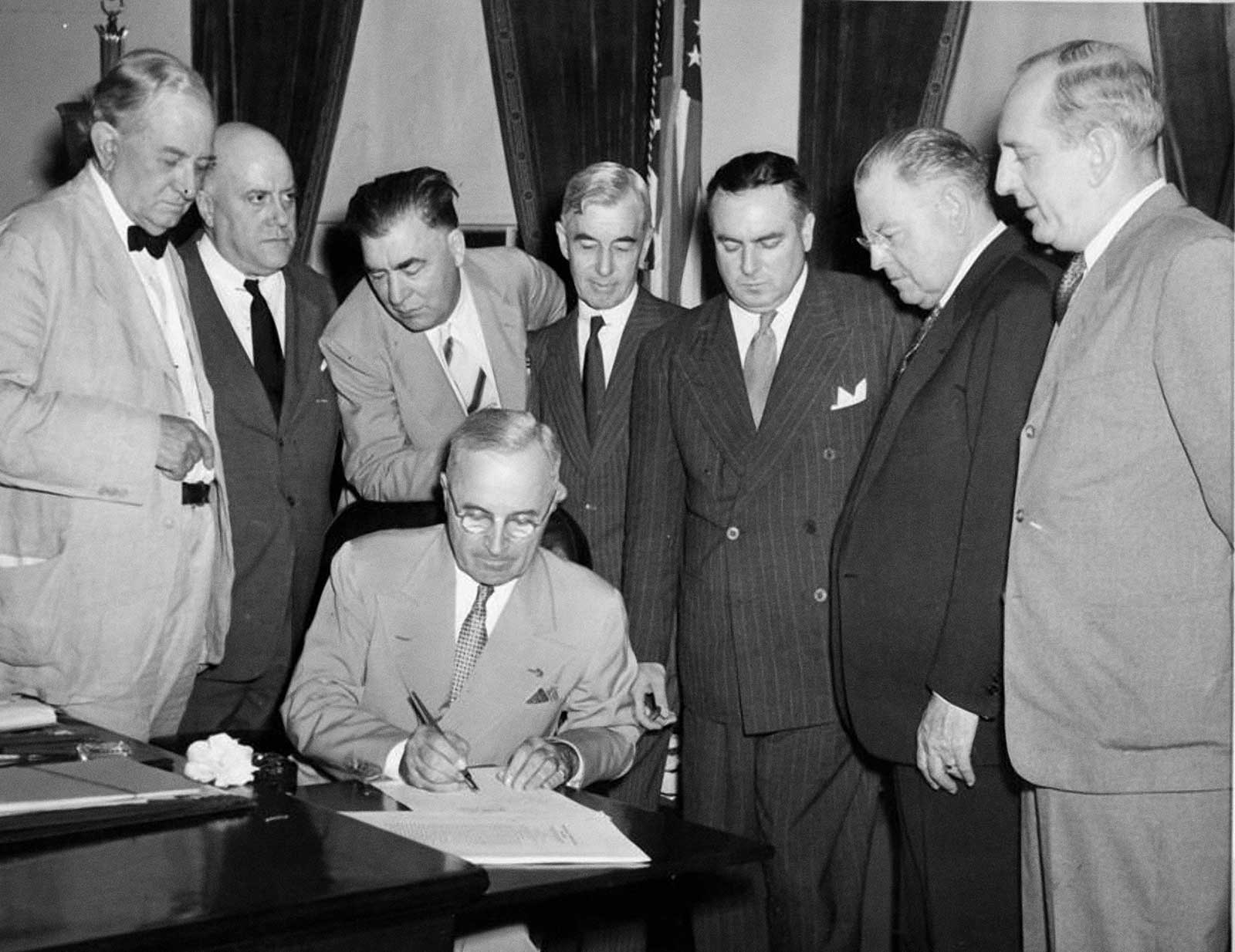The Beginnings of the Cold War
As the world began recovering from World War II, the first General Assembly of the United Nations met in London in January 1946, and created the United Nations Atomic Energy Commission. Part of their charge was to eliminate all weapons of mass destruction, including the atomic bomb.
America's first effort to define a policy on the control of atomic energy was The Report On The International Control Of Atomic Energy (informally known as the "Acheson-Lilienthal" Report), and was published March 16, 1946. Its premise was that there should be an international "Atomic Development Authority" which would have worldwide monopoly over the control of "dangerous elements" of the entire spectrum of atomic energy.
Drawing heavily on the information in the Acheson-Lilienthal Report, the U.S. proposal to the United Nations on international controls on nuclear material (named the Baruch Plan for its author Bernard Baruch) was presented. It called for the establishment of an international authority to control potentially dangerous atomic activities, license all other atomic activities, and carry out inspections.
The Soviets rejected the Baruch Plan, since it would have left the United States with a decisive nuclear superiority until the details of the Plan could be worked out and would have stopped the Soviet nuclear program. They responded by calling for universal nuclear disarmament. In the end, the UN adopted neither proposal. Seventeen days after Baruch presented his plan to the United Nations on July 1, 1946, the United States conducted the world's first postwar nuclear test.

Meanwhile, the control of the U.S. atomic efforts transferred from military control to civilian. The Atomic Energy Act of 1946 established the Atomic Energy Commission, putting the AEC in charge of all aspects of nuclear power. The agency consisted of five civilian members who were advised by a scientific panel called the General Advisory Committee and chaired by J. Robert Oppenheimer.